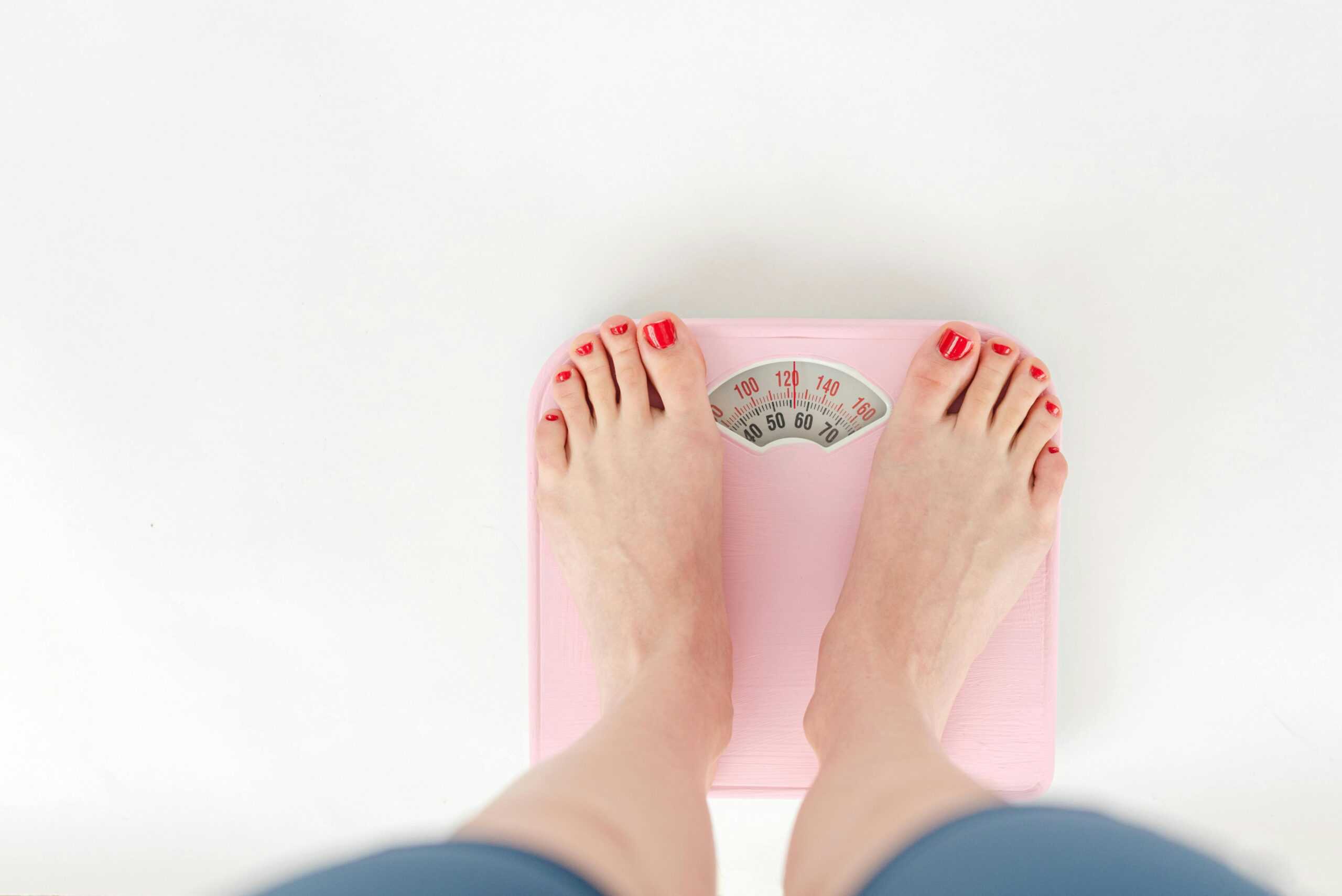Using a scale while on a weight loss journey can feel like an emotional rollercoaster. One day it’s your friend, the next day it’s your enemy.
The number we see on a scale can send us into a frenzy. We do all sorts of silly things like skipping a meal, swearing off all food except egg whites and spinach, or dropping to the floor and doing sit ups.
Sometimes the scale shuts us down. The numbers don’t make sense—you’ve been working hard at the gym, cutting back on what you’re eating, yet your weight doesn’t drop. If all that work didn’t make a difference, you think, I might as well give up on weight loss and eat like a king.
The scale (when used alone) is bad news. Today, I’ll tell you why. We’ll look at six more satisfying ways to track your weight loss progress.
Why The Scale Will Fail You
The scale alone is an inadequate tool. It provides one important piece of information, like a small detail in a story. You need other tools to give you a full picture of your health and weight loss progress. Here are three reasons why:
1. The Scale Measures Too Much At Once
Scales measure your entire body weight. That includes water, lean mass, microbiome, and fat.
Water alone can make up as much as 60% of your body weight! Lean mass includes your muscles, organs, and bones, which can make up about 40% of your body weight. Fat, the part of our body’s tissues we’re interested in shrinking also affects your number on the scale as well.
The bacteria that live on your skin and in your gut may contribute 2-6 pounds to your body weight.
In summary, the scale may not give you a clear picture of what’s going on with your body when it comes to increasing muscle mass and decreasing fat, as it’s tallying up weight for all of these other parts of your body as well.
2. The Scale Can’t Control Our Inconsistencies
The scale does one job: measure the weight of an object. But it can’t make up for human inconsistencies.
How you slept last night, what stage you are in your cycle, whether you’re wearing shoes, and when you had your last bowel movement could skew the number on the scale. Even a lopsided floor can have you gaining and dropping five pounds in seconds!
3. Hormones, Hydration, and Digestion Play a Part
Our body weight fluctuates naturally from day to day. Our body’s normal physiological functions cause our weight to ebb and flow slightly. For example, during your menstrual cycle, you may see higher numbers on the scale. Water retention can also bump the scale up by several numbers.
Weight fluctuations are normal and can range from two to eight pounds over a few days! That amount of oscillation can confuse, frustrate, or even panic you. Thankfully, there are better ways to track your weight loss progress.
Six Better Ways To Measure Your Weight Loss Progress
This list has helped thousands of my clients understand their bodies better, stay motivated, and reach their goals. Which option can you see yourself using?
Body Measurements
Measuring the areas of your body that tend to carry fat can help you track fat loss. Here’s how to take accurate measurements:
- Use a flexible tape measure, like this one.
- Measure the largest areas of your chest, calf, ribs, hips, thighs, upper arm, and waist.
- Make sure the tape measure is lying flat and pulled tight, but doesn’t make any indentations into your skin.
- Take and track these measurements regularly (once or twice a month).
Skinfold Calipers
These affordable and compact medical tools are great for tracking fat loss. Quick and easy to use, calipers can provide accurate and precise readings of your total body fat. Take these steps to use calipers the right way:
- Stand up, and relax your body without tensing your muscles.
- Pinch the skin and fat that lies under the skin, and gently pull it away from the muscle.
- Place the caliper about 1 cm away from your fingers along the pinched skin, then read the measurement from the caliper dial.
- Take measurements at these 10 sites one to two times a month to track your fat loss.
Old Clothes
As you progress in your weight loss journey, you’ll notice that your clothes start to feel looser. You might be dying to shop for a whole new wardrobe. But hold onto an old pair of pants and a shirt and try them on every month. Seeing how far you’ve come can give you a powerful boost in motivation!
Bod Pod
Bod Pods is an excellent and very accurate tool to measure your body composition. This tool uses air displacement plethysmography (ADP) to determine the body’s fatty mass to lean mass ratio. You can usually find them on University campuses or a quick Google search can lead you to the closest one. Check out this video to see my personal Bod Pod results!
DEXA Scan
Another great body composition tool is a Dexa Scan. This is a medical imaging test that uses low-dose X-rays to measure bone density, as well as lean muscle mass and fat mass. You can order one of these scans with your doctor to understand how much body fat you carry. Your doctor can talk to you about steps to schedule this test.
Body Composition Scale
Some at-home scales are now made with body composition measurements. My favorite is the FitTrack Dara Smart BMI Digital Scale. In the comfort of your own home, you can better understand your body competition and track fat loss. This scale can take 17 different measurements, including BMI, muscle mass, body water, fat mass, and visceral fat!
Before and After Pictures
Before and after pictures might be the most powerful proof of progress! Snap a before photo (like these), or dig up some old photos to keep on hand. Little details, like face puffiness, body tone, and skin vibrancy will show you that all your hard work is making a difference.
Don’t Ditch All Your Fat!
The scale doesn’t tell us whether we’re losing fat or lean body mass. Other tools can give us a better understanding of our body composition and how much progress we’re making toward our health goals.
As you shift your focus from weight loss to fat loss, however, make sure you’re setting realistic and healthy goals. Some body fat is critical for our health and well-being! Women need to maintain 10-13% body fat to survive.
If you want all your body’s systems to function and thrive, shoot for a number below 29%. Need extra support in hitting your weight loss goals? Learn more about LEAN and how a Dietitian-supported program can help you become a fat burner.





